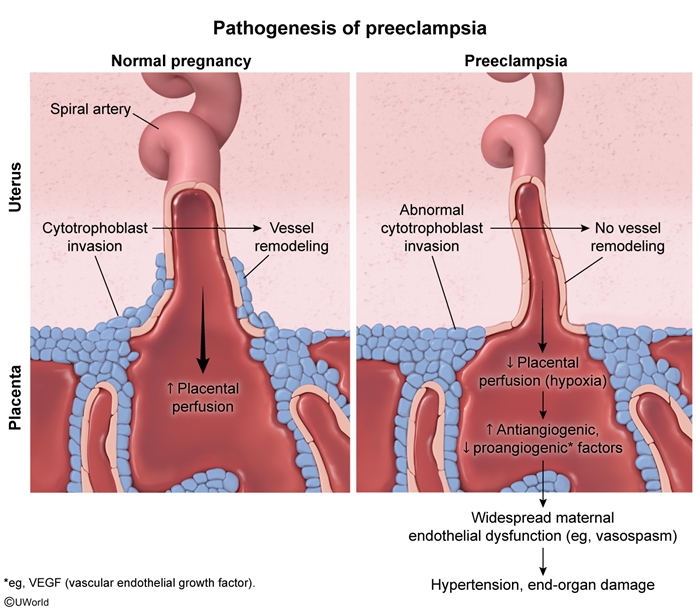Preeclampsia
Article Sections
Introduction
Preeclampsia is a hypertensive disorder of pregnancy characterized by new-onset hypertension in conjunction with proteinuria and/or evidence of end-organ dysfunction. Untreated, preeclampsia can progress to eclampsia, which manifests as tonic-clonic seizure and is associated with high maternal and fetal morbidity and mortality.
Pathophysiology and risk factors
The exact pathogenesis of preeclampsia is poorly understood but is thought to occur due to abnormal development of placental cytotrophoblasts and the spiral arteries, which provide blood supply to the fetus and placenta. In healthy pregnancies, cytotrophoblasts act on the endothelial and muscular layers of the spiral arteries, changing the spiral arteries from small, tortuous vessels to high-capacitance, low-resistance vessels. These changes allow for increased uteroplacental perfusion and preferential supply of blood to the fetus for growth and development.
Continue Learning with UWorld
Get the full Preeclampsia article plus rich visuals, real-world cases, and in-depth insights from medical experts, all available through the UWorld Medical Library.
Figures

Images
